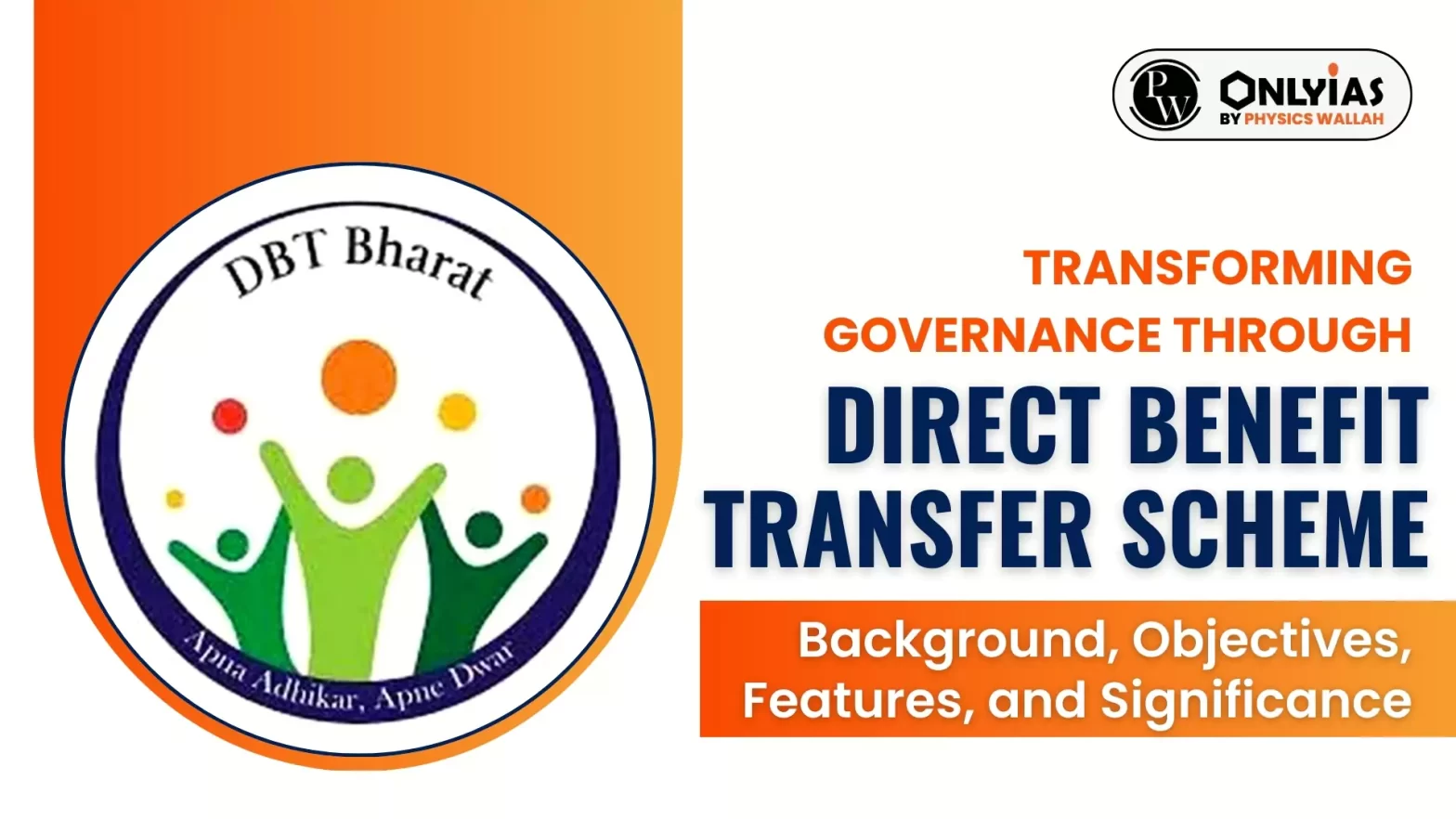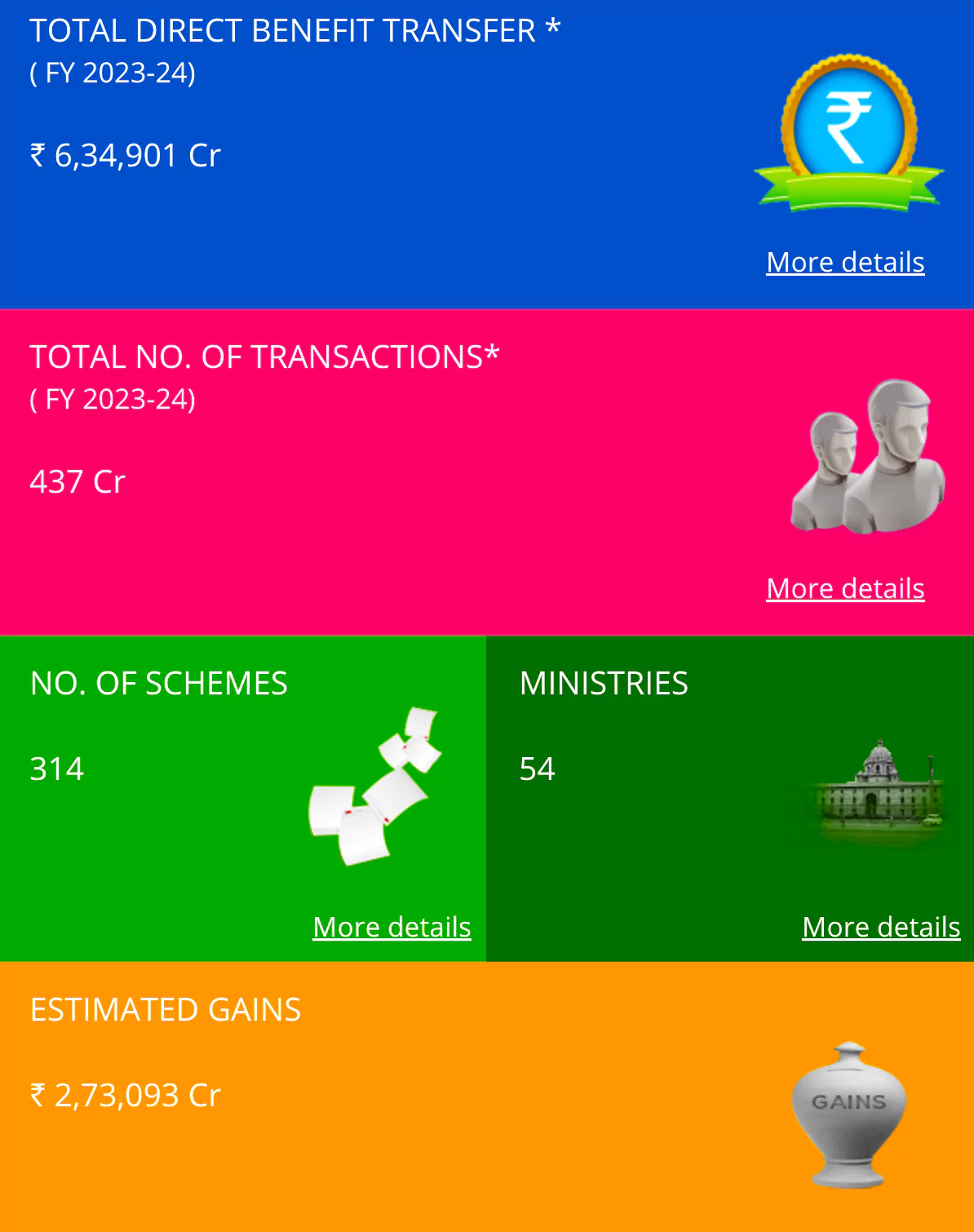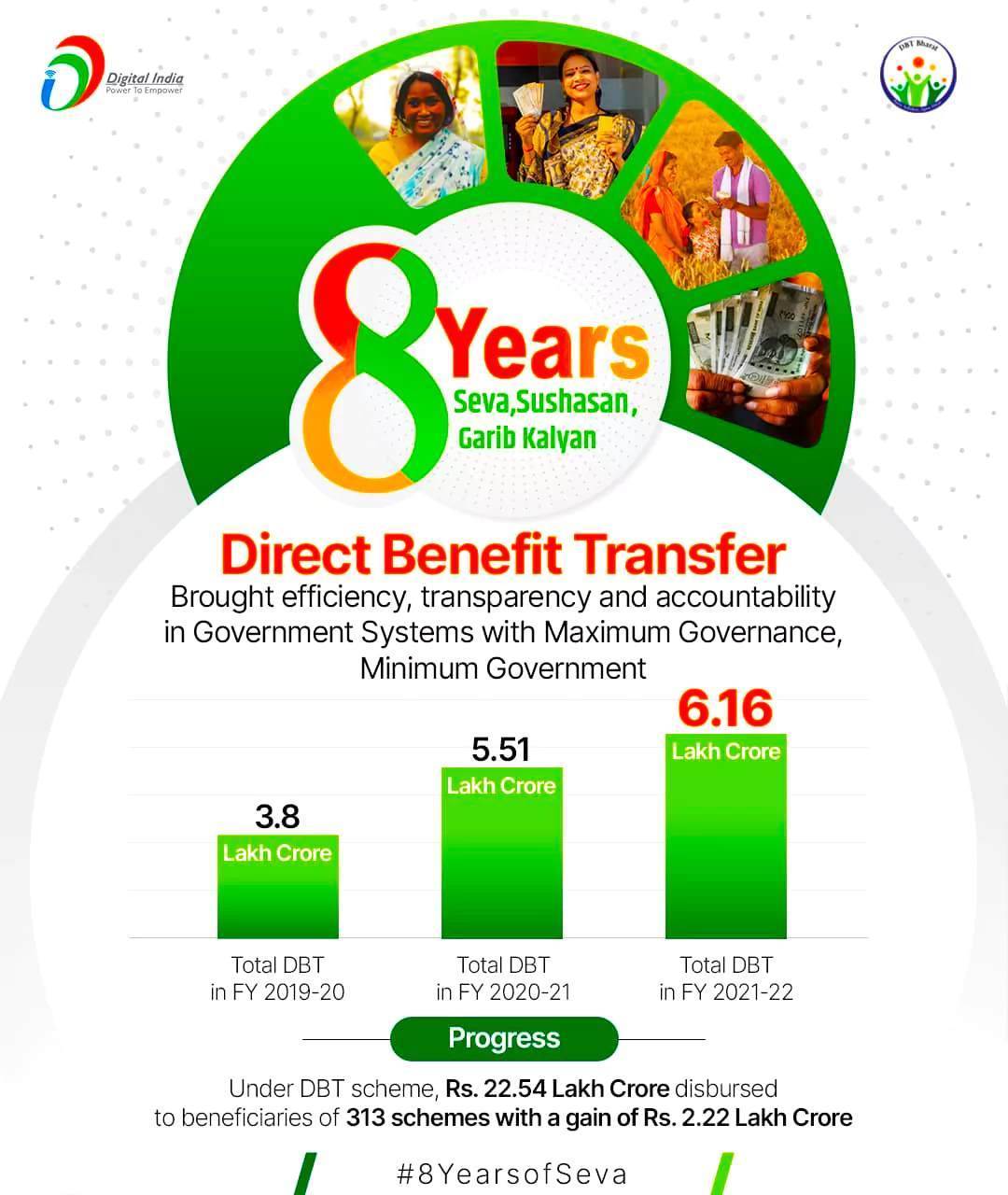
The Direct Benefit Transfer (DBT) Scheme of the Government is a breakthrough in the panorama of welfare schemes in India, geared toward lowering leakages, removing intermediaries, and ensuring the effective transfer of subsidies and welfare to the intended recipients, The DBT Full form is Direct Benefit Transfer, With the advent of DBT authorities have launched a Program for transparent and good governance, leveraging technology to empower citizens and streamline the subsidy delivery method.
The Direct Benefit Transfer (DBT) scheme, initiated by the Government of India, marks a significant milestone in welfare scheme delivery.


Direct Benefit Transfer (DBT) comprises several crucial components that ensure its effective implementation.
Current Status: There are 314 DBT Schemes from 54 Ministries under DBT (2023). Some important DBT schemes are:
| Scheme Name | Description |
| MGNREGA (Mahatma Gandhi National Rural Employment Guarantee Act) | Provides employment opportunities to rural households through guaranteed wage employment. |
| PDS (Public Distribution System) | Ensures food security by distributing essential commodities such as rice, wheat, and sugar at subsidised rates. |
| NSAP (National Social Assistance Program) | Provides financial assistance to the elderly, widows, and disabled individuals living below the poverty line. |
| PAHAL (Pratyaksha Hastaantarit Laabh) | Direct Benefit Transfer for LPG (DBTL) Scheme aimed at reducing leakages in LPG subsidy distribution. |
| PM-KISAN (Pradhan Mantri Kisan Samman Nidhi) | Provides income support to small and marginal farmers by directly transferring funds into their bank accounts. |
| PMUY (Pradhan Mantri Ujjwala Yojana) | Provides free LPG connections to women from Below Poverty Line (BPL) households to promote clean cooking fuel. |
| PMJDY (Pradhan Mantri Jan-Dhan Yojana) | A financial inclusion program that provides access to banking services, including DBT, to the unbanked population. |
| NSAP (National Social Assistance Program) | Provides financial assistance to the elderly, widows, and disabled individuals living below the poverty line. |
| SSA (Sarva Shiksha Abhiyan) | Aims to provide universal access to quality education by supporting infrastructure and teacher salaries. |
| NPS (National Pension System) | A voluntary pension scheme for individuals to create retirement savings, with contributions from employees and employers. |
| PMGDISHA (Pradhan Mantri Gramin Digital Saksharta Abhiyan) | Aims to make rural households digitally literate by imparting digital education and skills training. |
| PM-KISAN (Pradhan Mantri Kisan Samman Nidhi) | Provides income support to small and marginal farmers by directly transferring funds into their bank accounts. |
| NRLM (National Rural Livelihoods Mission) | Supports rural households in accessing sustainable livelihood opportunities through self-help groups and financial assistance. |
| Mid-Day Meal Scheme | Provides nutritious meals to schoolchildren to improve attendance, retention, and overall health. |
| PMFBY (Pradhan Mantri Fasal Bima Yojana) | Offers crop insurance to farmers against crop loss due to natural calamities, pests, or diseases. |
| Strengths of Direct Benefit Transfer | Weaknesses of Direct Benefit Transfer | Opportunities in Direct Benefit Transfer | Threats in Direct Benefit Transfer |
| Reduces leakages and pilferage of subsidies | Exclusion errors might also arise, main to eligible beneficiaries being overlooked | Expansion of coverage to greater welfare schemes | Implementation challenges including Aadhaar authentication screw-ups |
| Promotes monetary inclusion | Connectivity troubles in faraway areas may additionally restrict operation | Improved governance through greater transparency and accountability | Privacy worries concerning Aadhaar-linked transactions |
| Enhances performance in subsidy delivery | Limited focus among beneficiaries might also result in underutilization | Encourages innovation in provider shipping mechanisms | Political interference or manipulation of DBT schemes |
| Empowers beneficiaries by way of giving them manage over their finances | Operational demanding situations together with delays in fund transfers may arise | Targets marginalised businesses for social inclusion | Inadequate grievance redressal mechanisms leading to dissatisfaction |
| Targets subsidies to eligible beneficiaries successfully | Requires widespread administrative and logistical resources | Drives digital transformation throughout sectors | Risks of biases in beneficiary selection or resource allocation because of political influences |
The journey of the Direct Benefit Transfer scheme from its inception to nationwide implementation showcases the government’s commitment to modernise welfare program delivery and ensure the efficient utilisation of resources for the benefit of the citizens.
| Must Read | |
| NCERT Notes For UPSC | UPSC Daily Current Affairs |
| UPSC Blogs | UPSC Daily Editorials |
| Daily Current Affairs Quiz | Daily Main Answer Writing |
| UPSC Mains Previous Year Papers | UPSC Test Series 2024 |

<div class="new-fform">
</div>